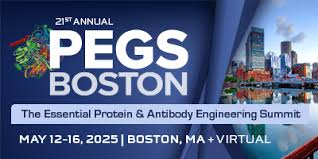Expert Knowledge
FAQs - Solid-phase Peptide Synthesis
Find out about our solid-phase peptide synthesis expertise.

Today, we're chatting about solid-phase peptide synthesis (SPPS) with one of our in-house experts, Dr Mohit Kapoor.
Let's start with the basics—how would you explain SPPS to someone new to the field?
SPPS is a stepwise method for assembling peptides on a solid support. Protected amino acids are added sequentially, ensuring precise sequencing. Each cycle includes coupling an amino acid, removing the protecting group, and repeating the process until the full peptide is synthesized. The final step cleaves the peptide from the support.
That makes sense! How does this compare to traditional solution-phase chemistry?
SPPS has a couple of major advantages. First, efficiency—excess reagents push reactions to completion quickly. Second, simpler purification—since the peptide stays anchored to the solid support, we can easily wash away excess reagents rather than going through laborious chromatography steps like in solution-phase chemistry. Third, the process can be fully automated with high precision for repetitive tasks and advantageous for larger quantities.
So, automation must be a game-changer. Why use a peptide synthesizer instead of manual synthesis?
Absolutely! Using a synthesizer means:
- Less hands-on time—it runs automatically, so we don’t have to manually mix reagents.
- Speed—what used to take weeks can now be done in hours.
- Higher throughput—we can synthesize up to four peptides simultaneously
That’s impressive! What scales can your system handle?
We typically work from 0.005 mmol to 1 mmol, but we can push up to 2.5 mmol in some cases. This flexibility means we can handle anything from small-scale discovery projects to larger optimization studies.
And in terms of peptide types — what can you synthesize in-house?
We primarily use Fmoc-SPPS, but we also have the capability for Boc-SPPS when needed. While most automated synthesizers focus on natural peptides, we also synthesize non-canonical peptides and perform side-chain modifications using protecting groups like Teoc, Dmab, Allyl, and Alloc. This allows us to create more complex cyclic and linear peptides. Apart from peptides, we also can accommodate peptoids, oligomers, and advanced functionalization’s on our automated system.
What about longer peptides? How do you handle sequences over 30 amino acids?
For longer peptides, we synthesize them in segments. This helps prevent peptide coiling and synthesis difficulties. After synthesis, we cleave and recombine the fragments to form the final peptide.
Speaking of challenges, how often do synthesis attempts succeed?
It depends on the sequence. Natural peptides usually have a high success rate. Non-canonical modifications or complex branching structures can make synthesis more difficult, but with the right strategy and expertise, we can overcome most challenges.
You mentioned earlier about using customize amino acids in SPPS can you explain a little more?
Certainly! One area we’re exploring is using new methodologies to generate novel amino acid derivatives. For example, the Kolbe coupling, a decarboxylative coupling of carboxylic acids to form new C-C bonds, has been known for 200 years but is rarely used in fine chemical synthesis due to the high current density required for oxidative radical generation.
Recently, the Baran group published protocols to overcome this limitation, increasing functional group tolerance. We are investigating whether this approach could serve as a platform for preparing novel amino acid derivatives, particularly from protected aspartic acid and glutamic acid derivatives. This could enable the synthesis of entirely new peptide architectures.
Do you use computational tools to support peptide design?
Yes, but I’m no expert in this side of things! We use Schrödinger software for in silico screening, helping us:
- Convert 2D structures into 3D models
- Predict physicochemical properties
- Carry out molecular docking and free-energy calculations
- Simulate molecular dynamics
These insights guide our design choices, helping us refine peptides before we even start synthesis.
Once you’ve synthesized a peptide, what does purification look like?
Purification is a multi-step process:
- Filtration – We wash away excess reagents with dimethylformamide (DMF)
- Cleavage – The peptide is released from the resin using mild acid such as hexafluoroisopropanol (HFIP)or occasionally trifluoroacetic acid (TFA)
- Precipitation – We use cold ether to remove unwanted TFA salts
- Purification – We use reverse-phase flash chromatography or HPLC to achieve high purity.
Our in-house purification team ensures seamless handover from synthesis to final product.
Before we wrap up—what are would you say are the biggest hurdles in peptide optimization?
Peptide stability, bioavailability, and physicochemical properties are key challenges. We’ve actually written about this in our blog post, Overcoming the Challenges of Peptide Drug Development.
Finally, tell us about Concept Life Sciences’ Peptide Discovery Engine.
Our discovery platform integrates:
- Advanced in silico modeling
- Cutting-edge chemistry
- Custom ADME profiling
- Comprehensive biological assessments
- Adapted toxicology readouts
This streamlined approach accelerates the journey from hit identification to lead nomination.
Take a look at our peptide drug discovery webpage to learn more about how we can support your peptide program.























